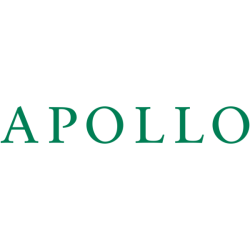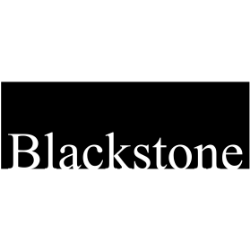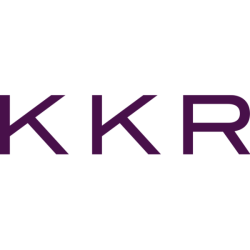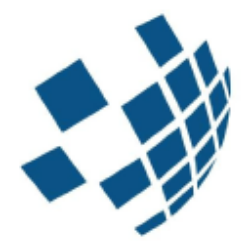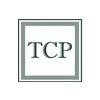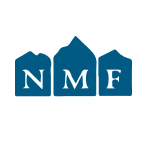CG

The Carlyle Group Inc.
CG
(1.8)52,90 USD
-1.84% ROA
2.11% ROE
-42.13x PER
16.632.021.250,00 USD
200.18% DER
3% Yield
2.63% NPM
The Carlyle Group Inc. Stock Analysis
The Carlyle Group Inc. Fundamental Analysis
Fundamental analysis in stock investing is like studying the foundation of a house before buying it. It involves looking at a company's financial health, like its earnings, assets, and debts, to determine if it's a good investment based on its fundamental strength and potential for growth.
| # | Analysis | Rating |
|---|---|---|
| 1 |
Dividend
The company's consistent dividend distribution over the past five years reflects its dedication to providing shareholders with steady returns, making it an appealing choice for investors seeking income stability. |
|
| 2 |
ROE
The stock's ROE falls within an average range (6.71%), demonstrating satisfactory profitability and efficiency in utilizing shareholders' equity. |
|
| 3 |
ROA
The stock's ROA (2%) shows that it's doing a pretty good job at making money from its assets, making it a solid choice to invest and earn steady profits. |
|
| 4 |
PBV
The stock's PBV ratio (1.93x) reflects a fair valuation, making it an attractive option for investors seeking balanced opportunities. |
|
| 5 |
Dividend Growth
The company's dividend growth has been consistently strong over the past three years, with annual increases that demonstrate its commitment to rewarding shareholders. |
|
| 6 |
Buffet Intrinsic Value
The company's stock presents an enticing opportunity as it appears undervalued (494) by Warren Buffett's formula, indicating that its intrinsic value exceeds the market price. |
|
| 7 |
DER
The company has a high debt to equity ratio (156%), which means it owes a lot of money compared to what it actually owns, making it financially risky. |
|
| 8 |
Revenue Growth
Regrettably, this company's revenue has shown no signs of growth over the past three years, suggesting limited potential for returns and making it a less appealing choice. |
|
| 9 |
Net Profit Growth
Over the past five years, this company's net profit has failed to exhibit any growth, indicating a stagnant financial performance and making it a less favorable choice for potential investors. |
|
| 10 |
Assets Growth
Company's revenue has remained stagnant over the past three years, indicating a lack of growth and making it a less favorable option. |
|
| 11 |
Graham Number
The Graham number of this company suggests that its stock price may be overvalued, indicating a less favorable investment opportunity. |
The Carlyle Group Inc. Technical Analysis
Technical analysis in stock investing is like reading the patterns on a weather map to predict future weather conditions. It involves studying past stock price movements and trading volumes to make predictions about where a stock's price might go next, without necessarily looking at the company's financial health.
| # | Analysis | Recommendation |
|---|---|---|
| 1 | Awesome Oscillator | Buy |
| 2 | MACD | Buy |
| 3 | RSI | Sell |
| 4 | Stoch RSI | Sell |
The Carlyle Group Inc. Price Chart
Financial Statements
Financial statements are like report cards for companies. They show how much money a company makes (income statement), what it owns and owes (balance sheet), and where it spends its money (cash flow statement), helping stock investors understand if a company is healthy and worth investing in.
Income Statements
An income statement for a company is like a scoreboard for its profits and losses. It shows how much money the company made (revenue) and how much it spent to make that money (expenses), helping stock investors see if a company is making a profit or not.
Revenue in stock investing is the total amount of money a company earns from its sales, and it's a key factor that investors consider to assess a company's financial performance and growth potential.
| Year | Revenue | Growth |
|---|---|---|
| 2009 | 1.317.800.000 | |
| 2010 | 2.798.900.000 | 52.92% |
| 2011 | 2.845.300.000 | 1.63% |
| 2012 | 3.630.700.000 | 21.63% |
| 2013 | 2.984.300.000 | -21.66% |
| 2014 | 2.621.400.000 | -13.84% |
| 2015 | 2.117.800.000 | -23.78% |
| 2016 | 1.536.900.000 | -37.8% |
| 2017 | 2.310.700.000 | 33.49% |
| 2018 | 1.808.600.000 | -27.76% |
| 2019 | 2.702.500.000 | 33.08% |
| 2020 | 1.876.700.000 | -44% |
| 2021 | 5.531.800.000 | 66.07% |
| 2022 | 3.355.300.000 | -64.87% |
| 2023 | 2.509.200.000 | -33.72% |
| 2023 | 2.643.100.000 | 5.07% |
| 2024 | 4.164.000.000 | 36.52% |
Research and Development Expenses are the costs a company incurs to create and improve its products or services, which can be important for investors to evaluate a company's innovation and potential for future growth.
| Year | Research and Development Expenses | Growth |
|---|---|---|
| 2009 | 0 | |
| 2010 | 0 | 0% |
| 2011 | 0 | 0% |
| 2012 | 0 | 0% |
| 2013 | 0 | 0% |
| 2014 | 0 | 0% |
| 2015 | 0 | 0% |
| 2016 | 0 | 0% |
| 2017 | 0 | 0% |
| 2018 | 0 | 0% |
| 2019 | 0 | 0% |
| 2020 | 0 | 0% |
| 2021 | 0 | 0% |
| 2022 | 0 | 0% |
| 2023 | 0 | 0% |
| 2023 | 0 | 0% |
| 2024 | 0 | 0% |
General and Administrative Expenses are the costs a company incurs to run its day-to-day operations, such as office rent, salaries, and utilities, which investors consider to understand a company's overall efficiency and management effectiveness.
| Year | General and Administrative Expenses | Growth |
|---|---|---|
| 2009 | 0 | |
| 2010 | 0 | 0% |
| 2011 | 0 | 0% |
| 2012 | 357.500.000 | 100% |
| 2013 | 496.400.000 | 27.98% |
| 2014 | 526.800.000 | 5.77% |
| 2015 | 705.800.000 | 25.36% |
| 2016 | 521.100.000 | -35.44% |
| 2017 | 276.800.000 | -88.26% |
| 2018 | 460.700.000 | 39.92% |
| 2019 | 494.400.000 | 6.82% |
| 2020 | 349.300.000 | -41.54% |
| 2021 | 431.700.000 | 19.09% |
| 2022 | 575.800.000 | 25.03% |
| 2023 | 572.000.000 | -0.66% |
| 2023 | 652.100.000 | 12.28% |
| 2024 | 751.600.000 | 13.24% |
EBITDA stands for Earnings Before Interest, Taxes, Depreciation, and Amortization. It is a measure that helps stock investors analyze a company's profitability by looking at its earnings without considering certain expenses. This helps to get a clearer picture of the company's financial performance and its ability to generate cash flow.
| Year | EBITDA | Growth |
|---|---|---|
| 2009 | 717.400.000 | |
| 2010 | 0 | 0% |
| 2011 | 1.801.300.000 | 100% |
| 2012 | 0 | 0% |
| 2013 | 0 | 0% |
| 2014 | 1.302.400.000 | 100% |
| 2015 | -7.400.000 | 17700% |
| 2016 | 0 | 0% |
| 2017 | 0 | 0% |
| 2018 | 0 | 0% |
| 2019 | 0 | 0% |
| 2020 | 0 | 0% |
| 2021 | 4.207.800.000 | 100% |
| 2022 | 1.813.800.000 | -131.99% |
| 2023 | 111.200.000 | -1531.12% |
| 2023 | 0 | 0% |
| 2024 | 1.175.600.000 | 100% |
Gross profit is the money a company makes from selling its products or services after subtracting the cost of producing or providing them, and it is an important measure for investors to understand a company's profitability.
| Year | Gross Profit | Growth |
|---|---|---|
| 2009 | 969.400.000 | |
| 2010 | 2.369.900.000 | 59.1% |
| 2011 | 2.367.400.000 | -0.11% |
| 2012 | 2.479.700.000 | 4.53% |
| 2013 | 722.900.000 | -243.02% |
| 2014 | 440.200.000 | -64.22% |
| 2015 | 452.100.000 | 2.63% |
| 2016 | -5.500.000 | 8320% |
| 2017 | 146.900.000 | 103.74% |
| 2018 | -302.100.000 | 148.63% |
| 2019 | 2.068.400.000 | 114.61% |
| 2020 | 882.000.000 | -134.51% |
| 2021 | 590.200.000 | -49.44% |
| 2022 | -1.584.800.000 | 137.24% |
| 2023 | 326.000.000 | 586.13% |
| 2023 | 939.700.000 | 65.31% |
| 2024 | 2.796.800.000 | 66.4% |
Net income in stock investing is like the money a company actually gets to keep as profit after paying all its bills, and it's an important measure to understand how well a company is doing financially.
| Year | Net Profit | Growth |
|---|---|---|
| 2009 | 1.357.700.000 | |
| 2010 | 3.051.200.000 | 55.5% |
| 2011 | 2.511.200.000 | -21.5% |
| 2012 | 20.300.000 | -12270.44% |
| 2013 | 104.100.000 | 80.5% |
| 2014 | 85.800.000 | -21.33% |
| 2015 | -16.700.000 | 613.77% |
| 2016 | 6.400.000 | 360.94% |
| 2017 | 244.100.000 | 97.38% |
| 2018 | 116.500.000 | -109.53% |
| 2019 | 1.184.400.000 | 90.16% |
| 2020 | 348.200.000 | -240.15% |
| 2021 | 2.974.700.000 | 88.29% |
| 2022 | 1.225.000.000 | -142.83% |
| 2023 | 325.200.000 | -276.69% |
| 2023 | -608.400.000 | 153.45% |
| 2024 | 592.800.000 | 202.63% |
EPS, or earnings per share, is a measure that shows how much profit a company has earned for each outstanding share of its stock, and it is important for stock investors as it helps understand the profitability of a company and compare it with other companies in the market.
| Year | Earning per Share (EPS) | Growth |
|---|---|---|
| 2009 | 4 | |
| 2010 | 5 | 20% |
| 2011 | 4 | -25% |
| 2012 | 0 | 0% |
| 2013 | 2 | 100% |
| 2014 | 1 | -100% |
| 2015 | 0 | 0% |
| 2016 | 0 | 0% |
| 2017 | 3 | 100% |
| 2018 | 1 | -100% |
| 2019 | 10 | 90% |
| 2020 | 1 | 0% |
| 2021 | 8 | 100% |
| 2022 | 3 | -166.67% |
| 2023 | 1 | 0% |
| 2023 | -2 | 100% |
| 2024 | 2 | 200% |
Cashflow Statements
Cashflow statements show the movement of money in and out of a company, helping stock investors understand how much money a company makes and spends. By examining cashflow statements, investors can assess if a company is generating enough cash to pay its bills, invest in growth, and provide returns to stockholders.
Free cash flow is the leftover cash that a company generates after covering its operating expenses and capital expenditures, which is important for stock investors as it shows how much money a company has available to invest in growth, pay dividends, or reduce debt.
| Year | Free Cashflow | Growth |
|---|---|---|
| 2009 | 391.200.000 | |
| 2010 | 2.797.300.000 | 86.02% |
| 2011 | 2.635.700.000 | -6.13% |
| 2012 | 1.995.700.000 | -32.07% |
| 2013 | 2.964.800.000 | 32.69% |
| 2014 | 2.616.000.000 | -13.33% |
| 2015 | 3.840.500.000 | 31.88% |
| 2016 | -326.000.000 | 1278.07% |
| 2017 | -41.100.000 | -693.19% |
| 2018 | -374.800.000 | 89.03% |
| 2019 | 330.800.000 | 213.3% |
| 2020 | -230.400.000 | 243.58% |
| 2021 | 1.749.600.000 | 113.17% |
| 2022 | -1.038.300.000 | 268.51% |
| 2023 | 875.000.001 | 218.66% |
| 2023 | 782.700.000 | -11.79% |
| 2024 | 273.100.000 | -186.6% |
Operating cash flow represents the cash generated or consumed by a company's day-to-day operations, excluding external investing or financing activities, and is crucial for stock investors as it shows how much cash a company is generating from its core business operations.
| Year | Operating Cashflow | Growth |
|---|---|---|
| 2009 | 418.700.000 | |
| 2010 | 2.877.000.000 | 85.45% |
| 2011 | 2.678.000.000 | -7.43% |
| 2012 | 2.028.400.000 | -32.03% |
| 2013 | 2.994.300.000 | 32.26% |
| 2014 | 2.645.700.000 | -13.18% |
| 2015 | 3.902.800.000 | 32.21% |
| 2016 | -300.600.000 | 1398.34% |
| 2017 | -7.100.000 | -4133.8% |
| 2018 | -343.500.000 | 97.93% |
| 2019 | 358.600.000 | 195.79% |
| 2020 | -169.200.000 | 311.94% |
| 2021 | 1.791.000.000 | 109.45% |
| 2022 | -379.300.000 | 572.19% |
| 2023 | 941.600.000 | 140.28% |
| 2023 | 799.800.000 | -17.73% |
| 2024 | 290.800.000 | -175.03% |
Capex, short for capital expenditures, refers to the money a company spends on acquiring or upgrading tangible assets like buildings, equipment, or technology, which is important for stock investors as it indicates how much a company is investing in its infrastructure to support future growth and profitability.
| Year | Capital Expenditure | Growth |
|---|---|---|
| 2009 | 27.500.000 | |
| 2010 | 79.700.000 | 65.5% |
| 2011 | 42.300.000 | -88.42% |
| 2012 | 32.700.000 | -29.36% |
| 2013 | 29.500.000 | -10.85% |
| 2014 | 29.700.000 | 0.67% |
| 2015 | 62.300.000 | 52.33% |
| 2016 | 25.400.000 | -145.28% |
| 2017 | 34.000.000 | 25.29% |
| 2018 | 31.300.000 | -8.63% |
| 2019 | 27.800.000 | -12.59% |
| 2020 | 61.200.000 | 54.58% |
| 2021 | 41.400.000 | -47.83% |
| 2022 | 659.000.000 | 93.72% |
| 2023 | 66.599.999 | -889.49% |
| 2023 | 17.100.000 | -289.47% |
| 2024 | 17.700.000 | 3.39% |
Balance Sheet
Balance sheets provide a snapshot of a company's financial health and its assets (such as cash, inventory, and property) and liabilities (like debts and obligations) at a specific point in time. For stock investors, balance sheets help assess the company's overall worth and evaluate its ability to meet financial obligations and support future growth.
Equity refers to the ownership interest or stake that shareholders have in a company, representing their claim on its assets and earnings after all debts and liabilities are paid.
| Year | Equity | Growth |
|---|---|---|
| 2010 | 1.268.900.000 | |
| 2011 | 10.217.500.000 | 87.58% |
| 2012 | 10.695.400.000 | 4.47% |
| 2013 | 19.945.300.000 | 46.38% |
| 2014 | 17.477.500.000 | -14.12% |
| 2015 | 11.645.600.000 | -50.08% |
| 2016 | 2.600.100.000 | -347.89% |
| 2017 | 4.881.400.000 | 46.73% |
| 2018 | 4.695.000.000 | -3.97% |
| 2019 | 2.969.600.000 | -58.1% |
| 2020 | 2.930.200.000 | -1.34% |
| 2021 | 5.706.200.000 | 48.65% |
| 2022 | 6.821.300.000 | 16.35% |
| 2023 | 5.784.500.000 | -17.92% |
| 2023 | 6.504.800.000 | 11.07% |
| 2024 | 5.729.400.000 | -13.53% |
Assets represent the valuable resources that a company owns, such as cash, inventory, property, and equipment, and understanding a company's assets helps investors assess its value and potential for generating future profits.
| Year | Assets | Growth |
|---|---|---|
| 2010 | 17.062.600.000 | |
| 2011 | 24.651.700.000 | 30.79% |
| 2012 | 42.262.000.000 | 41.67% |
| 2013 | 45.190.200.000 | 6.48% |
| 2014 | 44.377.300.000 | -1.83% |
| 2015 | 37.759.000.000 | -17.53% |
| 2016 | 11.119.100.000 | -239.59% |
| 2017 | 14.213.000.000 | 21.77% |
| 2018 | 14.769.500.000 | 3.77% |
| 2019 | 13.808.800.000 | -6.96% |
| 2020 | 15.644.800.000 | 11.74% |
| 2021 | 21.250.400.000 | 26.38% |
| 2022 | 21.403.000.000 | 0.71% |
| 2023 | 21.176.000.000 | -1.07% |
| 2023 | 20.957.300.000 | -1.04% |
| 2024 | 22.284.100.000 | 5.95% |
Liabilities refer to the financial obligations or debts that a company owes to creditors or external parties, and understanding a company's liabilities is important for investors as it helps assess the company's financial risk and ability to meet its obligations.
| Year | Liabilities | Growth |
|---|---|---|
| 2010 | 14.864.000.000 | |
| 2011 | 13.561.100.000 | -9.61% |
| 2012 | 31.566.600.000 | 57.04% |
| 2013 | 25.244.900.000 | -25.04% |
| 2014 | 26.899.800.000 | 6.15% |
| 2015 | 26.113.400.000 | -3.01% |
| 2016 | 8.519.000.000 | -206.53% |
| 2017 | 9.331.600.000 | 8.71% |
| 2018 | 10.074.500.000 | 7.37% |
| 2019 | 10.839.200.000 | 7.05% |
| 2020 | 12.714.600.000 | 14.75% |
| 2021 | 15.544.200.000 | 18.2% |
| 2022 | 14.581.700.000 | -6.6% |
| 2023 | 15.391.500.000 | 5.26% |
| 2023 | 14.452.500.000 | -6.5% |
| 2024 | 16.554.700.000 | 12.7% |
The Carlyle Group Inc. Financial Ratio (TTM)
Valuation Metrics
- Revenue per Share
- 9.13
- Net Income per Share
- -1.11
- Price to Earning Ratio
- -42.13x
- Price To Sales Ratio
- 5.08x
- POCF Ratio
- 11.42
- PFCF Ratio
- 11.9
- Price to Book Ratio
- 3.32
- EV to Sales
- 7.71
- EV Over EBITDA
- -92.75
- EV to Operating CashFlow
- 17.22
- EV to FreeCashFlow
- 18.03
- Earnings Yield
- -0.02
- FreeCashFlow Yield
- 0.08
- Market Cap
- 16,63 Bil.
- Enterprise Value
- 25,21 Bil.
- Graham Number
- 18.7
- Graham NetNet
- -77.41
Income Statement Metrics
- Net Income per Share
- -1.11
- Income Quality
- -4.38
- ROE
- -0.07
- Return On Assets
- 0.01
- Return On Capital Employed
- -0.02
- Net Income per EBT
- 0.41
- EBT Per Ebit
- -0.66
- Ebit per Revenue
- -0.1
- Effective Tax Rate
- 0.32
Margins
- Sales, General, & Administrative to Revenue
- 0.2
- Research & Developement to Revenue
- 0
- Stock Based Compensation to Revenue
- 0.11
- Gross Profit Margin
- 0.24
- Operating Profit Margin
- -0.1
- Pretax Profit Margin
- 0.06
- Net Profit Margin
- 0.03
Dividends
- Dividend Yield
- 0.03
- Dividend Yield %
- 3
- Payout Ratio
- -1.27
- Dividend Per Share
- 1.4
Operating Metrics
- Operating Cashflow per Share
- 4.09
- Free CashFlow per Share
- 3.9
- Capex to Operating CashFlow
- 0.05
- Capex to Revenue
- 0.02
- Capex to Depreciation
- 0.36
- Return on Invested Capital
- -0.02
- Return on Tangible Assets
- -0.02
- Days Sales Outstanding
- 737.72
- Days Payables Outstanding
- 676.62
- Days of Inventory on Hand
- 0
- Receivables Turnover
- 0.49
- Payables Turnover
- 0.54
- Inventory Turnover
- 0
- Capex per Share
- 0.18
Balance Sheet
- Cash per Share
- -45,05
- Book Value per Share
- 15,99
- Tangible Book Value per Share
- 14.04
- Shareholders Equity per Share
- 14.04
- Interest Debt per Share
- 29.51
- Debt to Equity
- 2
- Debt to Assets
- 0.45
- Net Debt to EBITDA
- -31.56
- Current Ratio
- 0.45
- Tangible Asset Value
- 5,03 Bil.
- Net Current Asset Value
- -14,59 Bil.
- Invested Capital
- -1133200000
- Working Capital
- -2,35 Bil.
- Intangibles to Total Assets
- 0.03
- Average Receivables
- 3,72 Bil.
- Average Payables
- 4,01 Bil.
- Average Inventory
- 0
- Debt to Market Cap
- 0.61
Dividends
Dividends in stock investing are like rewards that companies give to their shareholders. They are a portion of the company's profits distributed to investors, typically in the form of cash payments, as a way for them to share in the company's success.
| Year | Dividends | Growth |
|---|---|---|
| 2012 | 0 | |
| 2013 | 1 | 100% |
| 2014 | 2 | 0% |
| 2015 | 3 | 66.67% |
| 2016 | 2 | -200% |
| 2017 | 1 | 0% |
| 2018 | 1 | 0% |
| 2019 | 1 | 0% |
| 2020 | 1 | 0% |
| 2021 | 1 | 0% |
| 2022 | 1 | 0% |
| 2023 | 1 | 0% |
| 2024 | 1 | 0% |
The Carlyle Group Inc. Profile
About The Carlyle Group Inc.
The Carlyle Group Inc. is an investment firm specializing in direct and fund of fund investments. Within direct investments, it specializes in management-led/ Leveraged buyouts, privatizations, divestitures, strategic minority equity investments, structured credit, global distressed and corporate opportunities, small and middle market, equity private placements, consolidations and buildups, senior debt, mezzanine and leveraged finance, and venture and growth capital financings, seed/startup, early venture, emerging growth, turnaround, mid venture, late venture, PIPES. The firm invests across four segments which include Corporate Private Equity, Real Assets, Global Market Strategies, and Solutions. The firm typically invests in industrial, agribusiness, ecological sector, fintech, airports, parking, Plastics, Rubber, diversified natural resources, minerals, farming, aerospace, defense, automotive, consumer, retail, industrial, infrastructure, energy, power, healthcare, software, software enabled services, semiconductors, communications infrastructure, financial technology, utilities, gaming, systems and related supply chain, electronic systems, systems, oil and gas, processing facilities, power generation assets, technology, systems, real estate, financial services, transportation, business services, telecommunications, media, and logistics sectors. Within the industrial sector, the firm invests in manufacturing, building products, packaging, chemicals, metals and mining, forestry and paper products, and industrial consumables and services. In consumer and retail sectors, it invests in food and beverage, retail, restaurants, consumer products, domestic consumption, consumer services, personal care products, direct marketing, and education. Within aerospace, defense, business services, and government services sectors, it seeks to invest in defense electronics, manufacturing and services, government contracting and services, information technology, distribution companies. In telecommunication and media sectors, it invests in cable TV, directories, publishing, entertainment and content delivery services, wireless infrastructure/services, fixed line networks, satellite services, broadband and Internet, and infrastructure. Within real estate, the firm invests in office, hotel, industrial, retail, for sale residential, student housing, hospitality, multifamily residential, homebuilding and building products, and senior living sectors. The firm seeks to make investments in growing business including those with overleveraged balance sheets. The firm seeks to hold its investments for four to six years. In the healthcare sector, it invests in healthcare services, outsourcing services, companies running clinical trials for pharmaceutical companies, managed care, pharmaceuticals, pharmaceutical related services, healthcare IT, medical, products, and devices. It seeks to invest in companies based in Sub-Saharan focusing on Ghana, Kenya, Mozambique, Botswana, Nigeria, Uganda, West Africa, North Africa and South Africa focusing on Tanzania and Zambia; Asia focusing on Pakistan, India, South East Asia, Indonesia, Philippines, Vietnam, Korea, and Japan; Australia; New Zealand; Europe focusing on France, Italy, Denmark, United Kingdom, Germany, Austria, Belgium, Finland, Iceland, Ireland, Netherlands, Norway, Portugal, Spain, Benelux , Sweden, Switzerland, Hungary, Poland, and Russia; Middle East focusing on Bahrain, Jordan, Kuwait, Lebanon, Oman, Qatar, Saudi Arabia, Turkey, and UAE; North America focusing on United States which further invest in Southeastern United States, Texas, Boston, San Francisco Bay Area and Pacific Northwest; Asia Pacific; Soviet Union, Central-Eastern Europe, and Israel; Nordic region; and South America focusing on Mexico, Argentina, Brazil, Chile, and Peru. The firm seeks to invest in food, financial, and healthcare industries in Western China. In the real estate sector, the firm seeks to invest in various locations across Europe focusing on France and Central Europe, United States, Asia focusing on China, and Latin America. It typically invests between $1 million and $50 million for venture investments and between $50 million and $2 billion for buyouts in companies with enterprise value of between $31.57 million and $1000 million and sales value of $10 million and $500 million. It seeks to invest in companies with market capitalization greater than $50 million and EBITDA between $5 million to $25 million. It prefers to take a majority or a minority stake. It typically holds its investments for three to five years. Within automotive and transportation sectors, the firm seeks to hold its investments in for four to six years. While investing in Japan, it does not invest in companies with more than 1,000 employees and prefers companies' worth between $100 million and $150 million. The firm originates, structures, and acts as lead equity investor in the transactions. The Carlyle Group Inc. was founded in 1987 and is based in Washington, District of Columbia with additional offices in 21 countries across 5 continents (North America, South America, Asia, Australia and Europe).
- CEO
- Mr. Harvey Mitchell Schwartz
- Employee
- 2.300
- Address
-
1001 Pennsylvania Avenue, NW
Washington, 20004-2505
The Carlyle Group Inc. Executives & BODs
| # | Name | Age |
|---|---|---|
| 1 |
Mr. David Mark Rubenstein J.D. Co-Founder & Non-Executive Co-Chairman |
70 |
| 2 |
Mr. Daniel A. D'Aniello Co-Founder & Chairman Emeritus |
70 |
| 3 |
Ms. Lindsay P. Lobue Chief Operating Officer, MD & Partner |
70 |
| 4 |
Mr. Jeffrey William Ferguson MD & General Counsel |
70 |
| 5 |
Mr. William E. Conway Jr. Co-Founder & Co-Chairman of the Board |
70 |
| 6 |
Mr. Christopher Finn Senior Advisor |
70 |
| 7 |
Mr. George Iain-Prentice Main CFA, MBA Chief Executive Officer of Solutions |
70 |
| 8 |
Mr. John Christopher Redett Chief Financial Officer & Head of Corporate Strategy |
70 |
| 9 |
Mr. James H. Hance Jr., CPA Operating Executive & Director |
70 |
| 10 |
Mr. Harvey Mitchell Schwartz Chief Executive Officer & Director |
70 |
